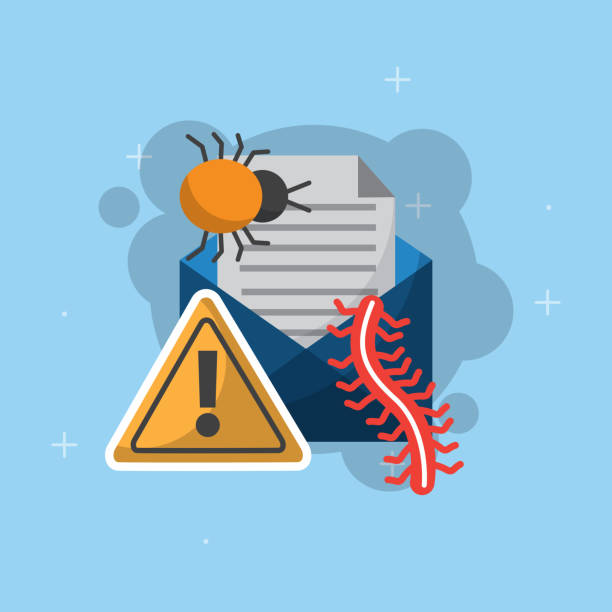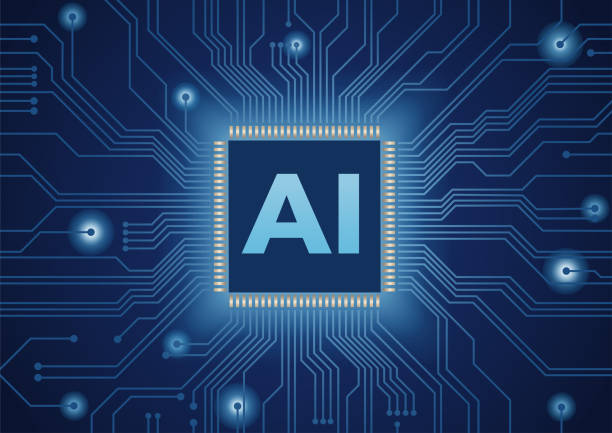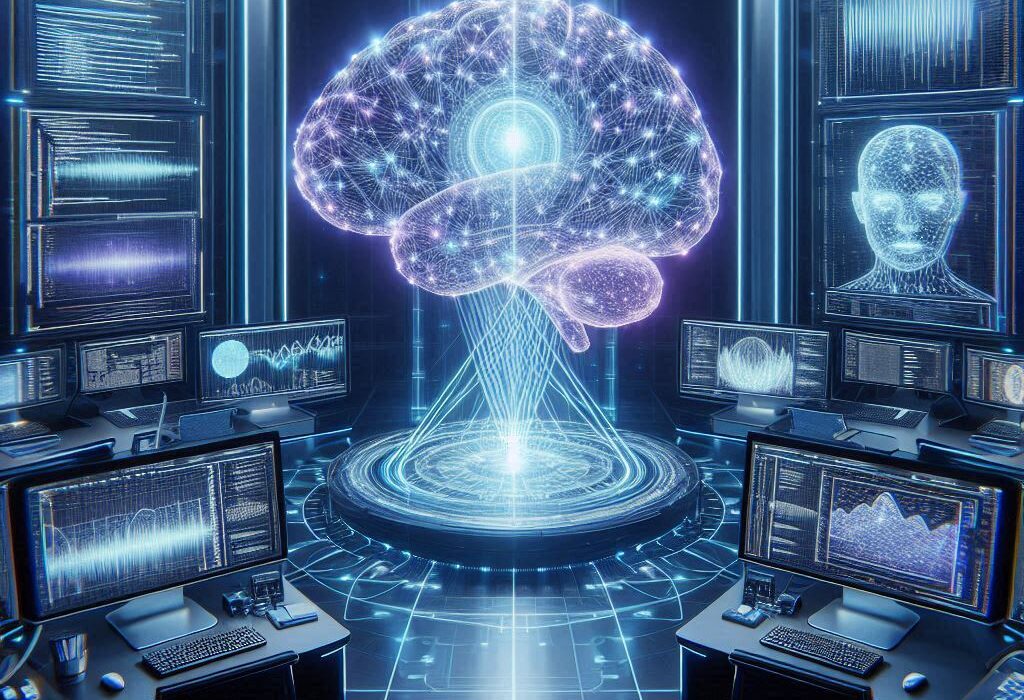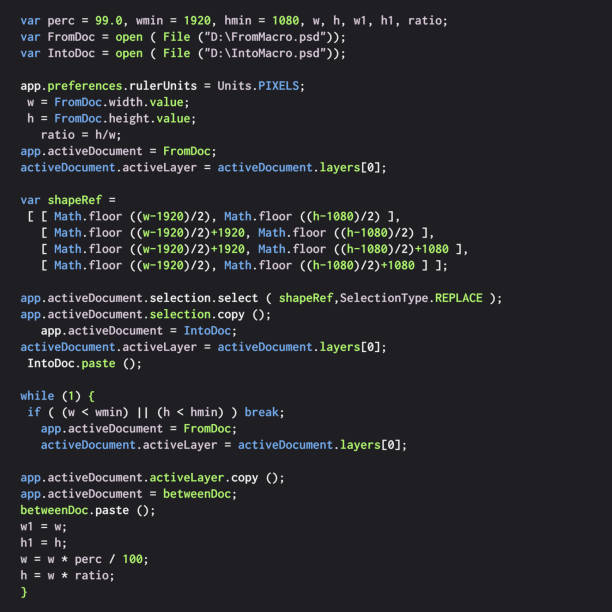In the vast and complex world of cybersecurity, few terms are as widely used—and as commonly misunderstood—as “malware” and “virus.” People often use the words interchangeably, assuming they mean the same thing. While all viruses are indeed malware, not all malware are viruses. The difference, though subtle in language, is significant in practice. It defines how malicious software spreads, how it behaves, and how security professionals defend against it.
Understanding this distinction is not just a matter of technical accuracy; it is a fundamental step in comprehending how digital threats evolve and impact individuals, organizations, and nations. In this definitive guide, we will explore the origins, mechanisms, and behaviors of both malware and viruses, revealing how they differ, intersect, and continue to shape the cybersecurity landscape.
The Origins of Malware and Computer Viruses
The story of malware begins almost as early as the story of computing itself. The concept of self-replicating code appeared long before the first personal computers. In the 1940s, mathematician John von Neumann proposed the idea of a “self-reproducing automaton”—a theoretical construct that could duplicate itself within a system. His concept laid the groundwork for what would later become computer viruses.
The first recognized computer virus, known as the “Creeper,” emerged in the early 1970s. Written by Bob Thomas as an experimental program for the ARPANET (a precursor to the modern internet), Creeper did not cause harm. It merely displayed a message: “I’m the creeper, catch me if you can!” Soon after, another program called the “Reaper” was created to remove Creeper, becoming the first antivirus software.
By the 1980s, personal computing had spread rapidly, and with it came the rise of malicious programs. The term “virus” was coined to describe software that could replicate itself and infect other files or systems. However, as technology evolved, cyber threats diversified. Hackers began developing software that stole information, displayed ads, locked files, or hijacked devices—activities that extended beyond mere replication. This broader category of harmful software became known as “malware,” a portmanteau of “malicious software.”
The evolution of malware reflected changes in computing itself. Early viruses spread via floppy disks and local networks. Modern malware, on the other hand, propagates through the internet, email attachments, malicious links, and even compromised software updates. While the methods have changed, the core goal remains the same: to exploit systems, steal data, and disrupt normal operations.
Defining Malware
Malware is an umbrella term encompassing all forms of software intentionally designed to cause harm, exploit vulnerabilities, or gain unauthorized access to systems. It includes a wide range of malicious entities, from ransomware and spyware to Trojans and worms. The unifying characteristic of all malware is intent: it exists to damage, disrupt, or profit at the expense of users or organizations.
Malware can infiltrate computers, mobile devices, IoT systems, and entire corporate networks. Some operate silently in the background, stealing information without detection. Others announce their presence dramatically, locking files or defacing websites. The diversity of malware types mirrors the diversity of motives behind them—financial gain, espionage, sabotage, activism, or mere experimentation.
Unlike viruses, malware does not necessarily replicate itself. It may rely on social engineering, network vulnerabilities, or compromised downloads to spread. Once installed, malware executes its programmed functions, which might include keylogging, data encryption, credential theft, or remote control of infected systems.
In today’s world, malware operates as part of a vast cybercriminal ecosystem. Attackers distribute it through phishing campaigns, malicious advertisements, drive-by downloads, and infected USB devices. Malware authors may sell their creations on underground markets, where other criminals purchase them as ready-to-use tools. This commercialization of cybercrime has made malware development and deployment more accessible than ever before.
Defining a Computer Virus
A computer virus, in contrast, is a specific subset of malware characterized by its ability to replicate and infect other files or programs. Like a biological virus, it attaches itself to a host—in this case, legitimate software or system files—and spreads when the infected program is executed.
Viruses often require human action to propagate. For example, when a user runs an infected file, shares it via removable media, or sends it through email, the virus activates and copies itself to new locations. This dependency distinguishes viruses from self-spreading malware like worms.
Once active, a virus can perform a range of malicious actions. Some simply display messages or alter data for annoyance. Others corrupt files, delete information, or render systems unusable. The most dangerous viruses can open backdoors for additional malware, turning infected computers into part of a larger botnet.
Early viruses were relatively simple, designed more as experiments than tools of crime. Over time, however, they evolved into sophisticated, stealthy entities. Modern viruses often use polymorphic or metamorphic code—techniques that change their digital “signature” each time they replicate, making detection far more difficult.
The Biological Analogy
The comparison between biological and computer viruses is more than metaphorical—it is structurally accurate. In biology, a virus cannot exist independently; it requires a host cell to replicate. Similarly, a computer virus cannot operate without attaching itself to a host program or file. When the host executes, the virus replicates, spreading its code to other parts of the system or to other devices.
Both biological and digital viruses exploit vulnerabilities in their environments. A biological virus might exploit a weakness in the immune system; a computer virus exploits flaws in software or user behavior. In both cases, prevention depends on awareness, protection mechanisms, and timely updates—whether vaccines for living organisms or patches for computer systems.
However, the analogy has limits. Biological viruses evolve through natural selection; computer viruses evolve through deliberate design. Their motivations—curiosity, malice, profit—reflect human intent rather than biological imperatives. Yet the comparison remains useful for illustrating how replication and infection function at a conceptual level.
The Structure and Operation of Malware
Malware operates through a combination of components designed to infiltrate, execute, and maintain persistence within a system. Understanding its anatomy helps explain why it remains so difficult to detect and eradicate.
Most malware contains several key elements. The first is the delivery mechanism—the method by which it reaches the target system. This might be an email attachment, a malicious link, a compromised website, or a disguised software installer. Once the victim interacts with the delivery vector, the malware deploys its payload—the core code that performs the malicious action.
The payload varies depending on the attacker’s objectives. It might encrypt files (as in ransomware), record keystrokes (as in keyloggers), or transmit data to an external server. Some malware includes persistence mechanisms to survive system reboots or antivirus removal attempts. These may involve modifying registry keys, creating scheduled tasks, or installing hidden processes.
Advanced malware often includes obfuscation and evasion techniques. These methods conceal its presence from security tools. Common strategies include encryption, code packing, and behavior masking. Some malware actively monitors its environment, pausing activity if it detects a virtual machine or sandbox used by analysts.
In large-scale attacks, malware may also communicate with a command-and-control (C2) server. This allows attackers to issue remote commands, exfiltrate data, or update malware behavior dynamically. Such communication transforms a one-time infection into an ongoing breach, granting cybercriminals continuous control over compromised systems.
The Structure and Operation of a Virus
A virus, though simpler in concept, follows a similar lifecycle: infection, replication, and activation. The infection phase begins when the virus attaches itself to a host file or boot sector. The replication phase occurs when that host file is executed, allowing the virus to copy itself to new locations. The activation phase involves the execution of the payload—the part of the code that causes damage or performs malicious tasks.
Traditional file-infecting viruses modify executable files by inserting their code at the beginning or end of the file. Boot sector viruses, on the other hand, target the system’s boot records, ensuring they load before the operating system does. This grants them control over the system from the earliest stages of startup.
Macro viruses represent another variant. These exploit macro scripting languages within applications like Microsoft Word or Excel. A malicious macro embedded in a document can execute automatically when the file opens, spreading the infection to other documents.
What distinguishes viruses from other forms of malware is their dependency on replication. A virus cannot function without a host; it cannot spread without activation. This dependency makes viruses less common today than in the past, as modern malware favors independent propagation methods. Nonetheless, viruses remain a critical part of cybersecurity history and an ongoing threat, especially in environments with outdated systems.
The Evolution of Cyber Threats
In the early days of personal computing, viruses dominated the threat landscape. They spread through floppy disks and later via email attachments. Famous examples include the “ILOVEYOU” virus and “Melissa,” which caused massive global disruptions in the late 1990s and early 2000s.
However, as the internet expanded, cyber threats diversified. Worms emerged as a new class of self-replicating malware that did not require a host file or user interaction. Trojans disguised themselves as legitimate software to trick users into installing them. Spyware and adware began collecting personal data for commercial gain. Eventually, ransomware introduced direct financial extortion, locking users’ data until payment was made.
This diversification led cybersecurity experts to adopt “malware” as a broader term encompassing all these categories. In this expanded ecosystem, viruses became one species among many, no longer the dominant threat but still a foundational concept.
Behavioral Differences Between Malware and Viruses
While all viruses are malware, not all malware exhibit viral behavior. The key behavioral difference lies in replication. A virus copies itself into other files or systems, relying on user actions to spread. Malware, in general, may spread autonomously, remain static, or operate in targeted ways without replication.
Another distinction lies in complexity and intent. Modern malware often serves specific criminal objectives—data theft, surveillance, financial fraud, or sabotage. Viruses, particularly older ones, were sometimes created as proofs of concept or pranks. Contemporary viruses, however, are often integrated into larger attack chains, functioning as delivery mechanisms for more complex payloads.
Malware can also operate without visibility, prioritizing stealth and persistence. For instance, rootkits conceal the presence of other malware by altering system-level processes. By contrast, many viruses are disruptive by design, altering files or displaying messages that reveal their existence.
From a defensive standpoint, this behavioral distinction affects detection and response strategies. Antivirus software traditionally focused on identifying known virus signatures—unique patterns of code. Modern anti-malware systems, however, use behavioral analysis, heuristic scanning, and machine learning to identify unfamiliar threats based on actions rather than code alone.
The Role of Worms, Trojans, and Ransomware
To fully appreciate the distinction between malware and viruses, it is essential to examine related categories. Worms, Trojans, and ransomware illustrate the diversity of malware behaviors that extend beyond viral replication.
A worm is a self-replicating program that spreads across networks without user intervention. Unlike viruses, worms do not need to attach to other files. They exploit vulnerabilities in network protocols or software to propagate automatically. The 2003 “Slammer” and “Blaster” worms demonstrated how quickly such threats could spread, infecting millions of systems within hours.
Trojans take a different approach. They disguise themselves as legitimate software to trick users into installing them. Once inside, they perform hidden malicious actions, such as opening backdoors, stealing credentials, or downloading additional malware. The name originates from the myth of the Trojan Horse—a seemingly harmless gift concealing destructive intent.
Ransomware represents the convergence of multiple malware techniques. It infiltrates systems, encrypts files, and demands payment—usually in cryptocurrency—for decryption keys. Modern ransomware campaigns often involve multiple stages, using phishing emails, exploit kits, and even worms for distribution. Unlike viruses, ransomware typically does not replicate; instead, it spreads strategically to maximize impact.
These categories demonstrate why “malware” has become the preferred umbrella term in cybersecurity. It captures the full spectrum of malicious behavior, encompassing both replicating and non-replicating threats.
Infection Vectors and Propagation
The difference between malware and viruses also extends to how they spread. Viruses depend on host files and user actions. Malware can exploit a wider range of vectors, from network vulnerabilities to social engineering.
Email attachments remain one of the most common infection channels. Attackers disguise malicious files as invoices, resumes, or system notifications. When the user opens the attachment, the malware installs silently. Similarly, drive-by downloads occur when a compromised or malicious website automatically installs malware through browser vulnerabilities.
Software supply chain attacks represent a growing concern. Here, attackers compromise legitimate software vendors, inserting malware into updates distributed to thousands of users. Such attacks, as seen in the SolarWinds breach, can have far-reaching implications.
Removable media, such as USB drives, continue to play a role, particularly in air-gapped or isolated environments. Malware like “Stuxnet” famously used infected USB drives to infiltrate industrial systems.
Network-based propagation is another method. Worms exploit unpatched vulnerabilities to spread laterally across systems. Some modern malware uses a combination of these methods, employing multiple stages to ensure persistence and maximize infection rates.
Detection and Defense Mechanisms
Defending against malware and viruses requires layered strategies that address both prevention and response. Antivirus software remains a cornerstone, using signature databases to identify known threats. However, as malware grows more sophisticated, signature-based detection alone has become insufficient.
Modern endpoint protection platforms incorporate behavioral analysis, machine learning, and heuristics. These systems monitor programs for suspicious actions—such as unauthorized file modifications or network connections—to detect unknown threats. Sandboxing isolates potentially dangerous files in controlled environments, analyzing their behavior before allowing execution.
Patch management plays a critical role in defense. Many malware infections exploit outdated software with known vulnerabilities. Regular updates close these entry points. Similarly, email filtering, web security gateways, and network segmentation reduce exposure to malicious content.
Human awareness remains equally vital. Phishing remains the most common delivery method for malware, relying on user interaction. Training users to recognize suspicious emails, attachments, and links is essential to reducing infection rates.
Incident response and backup strategies provide resilience against inevitable breaches. For instance, in ransomware cases, regular offline backups enable recovery without paying ransom demands. Effective monitoring, combined with timely response, can contain infections before they escalate into full-blown crises.
The Economic and Criminal Ecosystem of Malware
Malware development is no longer the domain of isolated hackers. It has become an organized, profit-driven industry. Underground marketplaces sell malware kits, exploit tools, and stolen credentials. Criminal groups operate like corporations, complete with customer support and affiliate programs.
Ransomware-as-a-Service (RaaS) exemplifies this commercialization. Developers create ransomware tools and lease them to affiliates who distribute the malware in exchange for a share of the profits. Similar models exist for banking Trojans, botnets, and information stealers.
This ecosystem extends to gray markets, where security researchers and state actors purchase zero-day exploits—previously unknown vulnerabilities—for high prices. The boundary between criminal and political use of malware has blurred, with nation-states employing similar tactics for espionage and cyberwarfare.
The result is a continuous arms race. As defenders improve detection, attackers innovate new evasion techniques. Machine learning, encryption, and automation fuel both sides, creating a constantly shifting battlefield where the distinction between malware types becomes more academic than practical.
The Role of Artificial Intelligence in Modern Threats
Artificial intelligence has transformed both malware creation and defense. On the offensive side, AI enables malware to adapt in real time. It can modify its behavior to avoid detection, analyze security environments, and choose optimal times to strike.
AI-powered phishing tools can craft personalized messages at scale, mimicking human communication with uncanny accuracy. Similarly, AI-driven malware can prioritize targets based on potential financial gain or strategic value.
Defensively, AI strengthens anomaly detection and response automation. Machine learning models analyze massive datasets to identify subtle deviations from normal behavior, revealing threats that traditional systems might miss. AI also enhances predictive analytics, allowing organizations to anticipate emerging attack patterns before they manifest.
The future of cybersecurity will hinge on this balance—AI as both shield and sword, shaping the evolution of malware and defense alike.
Ethical, Legal, and Social Implications
The proliferation of malware raises profound ethical and legal questions. Should security researchers be allowed to create viruses for study? How should governments regulate offensive cyber capabilities? What privacy trade-offs are acceptable for effective defense?
Laws like the Computer Fraud and Abuse Act (CFAA) in the United States criminalize unauthorized access and malware distribution. Internationally, frameworks such as the Budapest Convention aim to harmonize cybercrime laws. However, enforcement remains challenging due to jurisdictional boundaries and anonymity on the internet.
Beyond legality, malware affects trust in technology. Each new breach erodes confidence in digital systems, from online banking to healthcare infrastructure. The social cost of cybercrime extends far beyond financial loss, undermining the very fabric of digital society.
The Future of Malware and Viruses
The line between malware and viruses continues to blur. As threats evolve, replication is no longer the defining characteristic; adaptability is. Future malware may use artificial intelligence to self-optimize, evade defenses, and propagate autonomously across networks and devices.
The rise of the Internet of Things introduces billions of new targets—from smart thermostats to autonomous vehicles. Each connected device represents a potential attack surface. Malware tailored for IoT environments could disrupt not just data but physical systems, bridging the gap between cyber and real-world harm.
Meanwhile, advances in quantum computing may eventually render current encryption obsolete, forcing a complete rethinking of cybersecurity architecture. In such a world, malware could exploit quantum vulnerabilities as easily as today’s attacks exploit software flaws.
Despite these challenges, the ongoing evolution of security technology offers hope. Behavioral analytics, zero-trust architectures, and AI-driven defense systems promise to make future attacks harder and riskier for perpetrators.
Conclusion
The distinction between malware and viruses may appear semantic, but it represents two different paradigms of digital threat. A virus is a self-replicating subset of malware—an early form of digital infection that laid the groundwork for modern cyber threats. Malware, as a broader category, encompasses the entire ecosystem of malicious software that seeks to exploit, manipulate, and profit from our interconnected world.
Understanding this distinction deepens our grasp of cybersecurity as a discipline. It reminds us that while technology changes, the fundamental dynamics of attack and defense remain rooted in human creativity—whether for harm or protection.
Malware and viruses will continue to evolve, adapting to new platforms and technologies. The challenge for defenders is not only to build stronger systems but to foster awareness, ethics, and resilience. In the end, cybersecurity is not merely about code or machines; it is about trust—the fragile bond that sustains our digital civilization in the face of relentless, intelligent threat.






